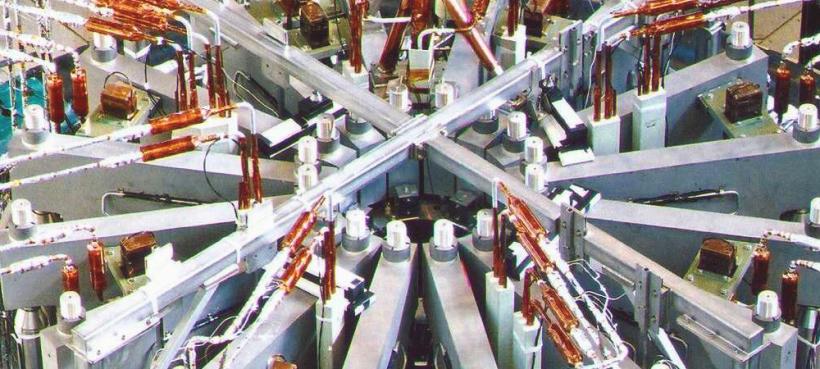
Large-scale magnets capable of high magnetic fields are a core enabling technology for many areas of scientific research, medicine, imaging, and energy. The PSFC and Francis Bitter Magnet Laboratory have a long history of developing cutting edge high-field magnets for a variety of applications. Over the last 70+ years the MIT group has produced record-setting magnets and invented new applications and over the last 25 years the team of scientists and engineers has developed into one of the worlds' leading groups dedicated to advancing superconducting and conventional magnet technology for large-scale systems. The work has covered nearly every major application of large-scale superconductivity including fusion energy, magnetic levitation, energy storage, power generation, and transmission, magnetic separation, high energy and nuclear physics, as well as medical applications.
The most recent research interests include the application of High Temperature Superconductors to very high current and high magnetic field conductors and magnets for magnetic confinement fusion devices and for increasing power grid efficiency, reliability and stability. Another major research focus is the development of very high-field, highly compact cyclotron accelerators for medical and security applications, and for laboratory research in nuclear physics. These devices use one of the Low Temperature Superconductors. Other current programs include Superconducting Magnetic Energy Storage design for an uninterruptible power system, and superconducting electrical generator and motor design for ship propulsion.
This work is based on expertise in high field magnet design; stability, quench and protection systems for superconducting magnets; high strength, long fatigue life materials development; superconducting Cable-In-Conduit Conductor (CICC) analysis, development and testing; and magnet safety analysis. The research is performed by an interdisciplinary team of engineers with backgrounds in mechanical, electrical, and nuclear engineering, in materials science, and in engineering physics. Resources include extensive capabilities in the areas of electromagnetic analysis, both transient and steady state, 2D and 3D magnetic field analysis, and 2D and 3D structural analysis.
Dr. John Brisson
brisson@mit.edu